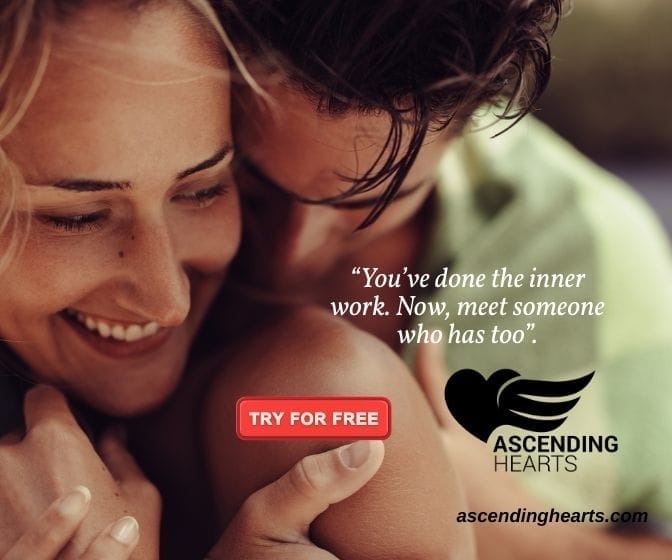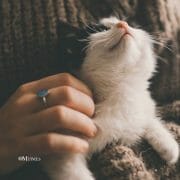What War Is Teaching Us About Animals & The Earth

The escalation of the war in Ukraine has brought to our attention the devastating reality of war for Human beings, animals, and our Earth.
War, Animals, and The Earth
By Sarah A. Bowen
Recently, numerous bears appeared in my newsfeed. Not as cute videos or conservation pleas. No, these are vicious caricature bears standing in for Russian aggression. Snarling and swiping, they project what we can’t accept about humanity onto another species. Joining the ranks of Godzilla and JAWS, Russia-as-Bear symbolizes an unhinged force of destruction.
It’s curious, our inconsistency about animals. A case in point, for many of us, the first animal we ever meet is a bear, gifted to represent comfort and care. According to a survey commissioned by Build-a-Bear Workshop, more than half of the 2,000 American adults they surveyed acknowledged still having a teddy bear from childhood. And over forty percent of those people confessed they still sleep with the bear.
I’ll admit, I still sleep with mine sometimes, too. Fluffy and blue, he appeared in the crib just a few days after my birth. When my mother cranked his windup key, the music box mysteriously inserted in his bottom issued the metallic tones of Frère Jacques, lulling me to sleep.
Through the years, Blue Bear accompanied me to the doctor and went with us on vacation. I hugged him for solace and buried my tears in his fur. Eventually, he lost a nose (so my mother sewed him a new one), and the music box stopped playing. His fur matted, and his stuffing compacted.
We both turned fifty this past year, and neither of us resembles our former selves. Yet, I still cradle him against my chest on challenging days as I fall asleep. My husband seems not to take offense, somehow intuiting that you can’t compete with a child’s first love.
Since Russia invaded Ukraine, Blue Bear has been a constant companion in our bed. I can’t help but feel transported back forty years, my childhood fears reappearing, recalling bomb drills in elementary school when adults whispered about who was winning the nuclear arms “race.”
Yet, as an adult, I’m more attuned to the horror of what’s going on this time around.
My heart breaks as I watch millions of people face life-or-death decisions. The geographic displacement, broken families, food shortages, soaring energy costs, economic insecurity, and other crises. Meanwhile, I watch nervously as countries contemplate what to do about refugees, and speculate on the global impacts of war.
As an animal chaplain, I’m also tuned in to the interspecies problems, such as Ukrainians making tough decisions about leaving pets behind or trying to manage traveling with them. So, other images appear in my social feed. A Ukrainian man in a helmet and gun carries a small fish in a tank out of a bombed building. A family arriving at a border wonders if immigration rules will cause them to abandon their dog when crossing. Ukrainian soldiers pose for a selfie with cats, referring to felines as the official animal of the resistance. I read about four thousand animals stuck in the Kyiv Zoo with just over a week’s worth of food. The tremendous noise causes intense fear that is too overwhelming for animals stuck in captivity with nowhere to escape, so the remaining staff tries sedating them.
It can be sensitive to raise these issues. People ask me, “How can you be talking about animals when so many humans are in danger?” It’s a fair question in a world where only so many resources exist, where funding and space are at a premium. Yet, to ask this question is somehow to gloss over that humans are animals. And that cats, dogs, and other beings provide crucial mental health benefits to human animals when we are stressed, depressed, or in crisis. Or ignore that separation from pets can cause further trauma for refugees. And on the flip side, animals can help humans address PTSD.
So, what can we do? First, if we are able, we need to support the rescue and rehoming efforts of humans and their animal companions.
Second, we need to acknowledge that we care about abandoned cats and dogs. And at the same time, we are worried about captive elephants and tigers. We need to help normalize that it is also sad and tragic when these beings lose their lives.
Third, rather than believing we need to decide between caring for animals or humans, we can acknowledge that they coinhabit each other’s lives. That interspecies connections are essential to the wellbeing of all and of our shared planet.
It helps to reconsider our language. For example, we can rethink the term “non-human” not only because it suggests that to be human is the preferred way of being but also because it lacks precision. Biologist Frans de Waal explains, “It lumps millions of species together by an absence as if they were missing something. When students embrace this jargon in their writing, I cannot resist sarcastic corrections in the margin saying that for completeness’s sake, they should add that the animals they are talking about are also nonpenguin, nonhyena, and a whole lot more.” Accordingly, some people favor using the term other-than-human animals. Others prefer saying sentient beings.
About Non Humans and Anymals
Lisa Kemmerer, a philosopher-activist who’s passionate about this topic, has coined the term anymal, to include both human and other-than-humans in a single word.
Adding more complexity, the commonly accepted classification system that gives us animals separates us from plants, trees, and other life forms.
For this reason, American ecologist and philosopher David Abram proposes we consider the needs of the entire “more-than-human world.”
Abram reminds us that for a thousand generations, humans considered themselves “part of a wider community of nature, and they carried on active relationships not only with other people but with animals, plants, and natural objects (including mountains, rivers, winds, and weather patterns) that we have only lately come to think of as ‘inanimate.’” War affects not only the two-legged and four-legged beings. Anthropogenic violence impacts life in all of its living and elemental forms. When this is all over, those rivers and soils will need help recuperating, too.
When we start to reevaluate our language, our actions often follow—increasing our ability to empathize with the suffering of others. Humans, animals, and nature are self-serving categories created by people in a seemingly endless cycle of highlighting perceived differences, like species, race, biological sex, gender, sexuality, ability, and so on. Each classification we invent divides up the world. Unfortunately, after our subdividing, we tend to place some beings in higher esteem than others. And with this valuation, power dynamics arise.
All this is not to say that ethical quandaries about where to place aid and how to use limited resources will be resolved easily. But it may help us better understand the total collateral damage of power run amok.
As global citizens, we are involved in the events between Russia and Ukraine—whether we like it or not. We cannot be bystanders. We have a responsibility to support the suffering of all beings and work towards peace. At the same time, we have a golden opportunity to contemplate where we ourselves might be creating dangerous distinctions of what is “like me” and “not like me”.
Also how those categorizations lead us to develop limits on whom we extend our compassion to around our homes and in our local communities, as well.
© 2022 by Sarah Bowen for OMTimes.
Excerpted and adapted from Sacred Sendoffs: An Animal Chaplain’s Advice For Surviving Animal Loss, Making Life Meaningful, & Healing The Planet by Sarah A. Bowen.
Click HERE to Connect with your Daily Horoscope on OMTimes!
Visit Our Astrology Store for Personalized Reports
About the Author
Sarah A. Bowen is an award-winning author, animal chaplain. She is co-founder of Compassion Consortium, the first interfaith, interspiritual, and interspecies community and advocate for animals and the planet. She also companions animals through death, creates sacred memorial rituals, counsels humans grieving the animal loss. Sarah advocates for exploited and endangered species in both religious and secular contexts.
Her new book, Sacred Sendoffs: An Animal Chaplain’s Advice For Surviving Animal Loss, Making Life Meaningful, & Healing The Planet, contains tools for surviving animal loss and mindfully extending compassion to the 8.7 million other species we share this interdependent planet with. (April 2022, Monkfish Publishing). Follow her on Instagram @modernreverend
OMTimes is the first and only Spiritually Conscious Magazine. Follow Us On Facebook, Twitter, Instagram, Linkedin, Pinterest, and Youtube
OMTimes Magazine is one of the leading on-line content providers of positivity, wellness and personal empowerment. OMTimes Magazine - Co-Creating a More Conscious Reality








